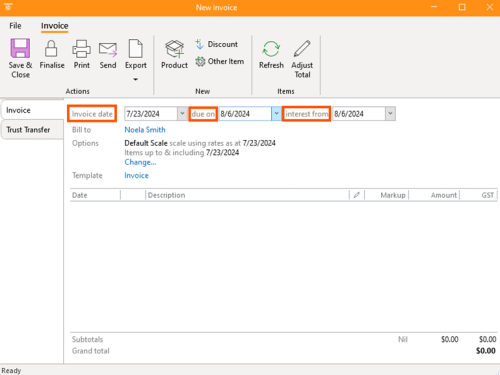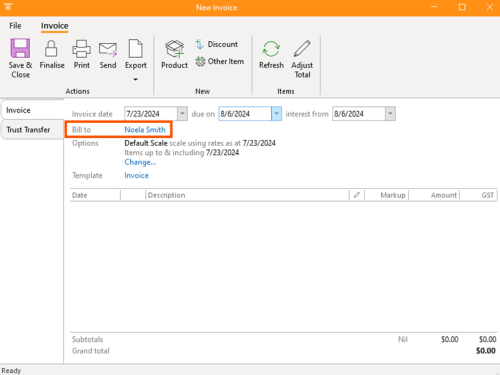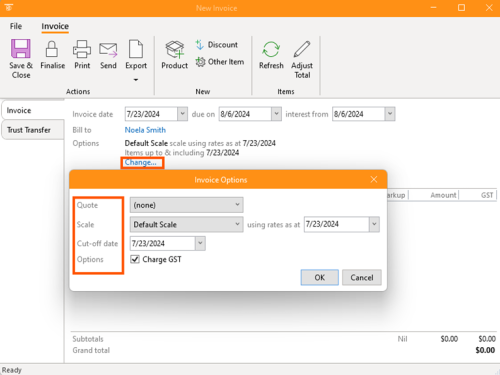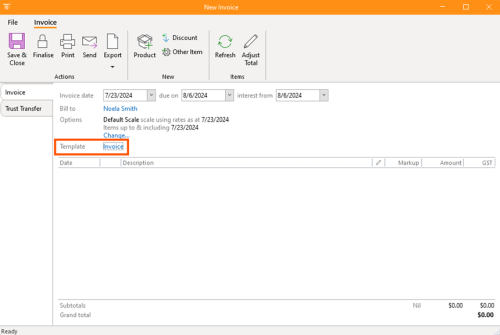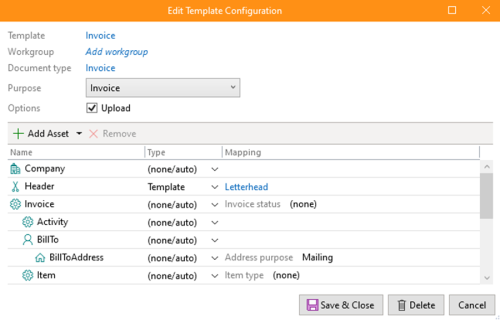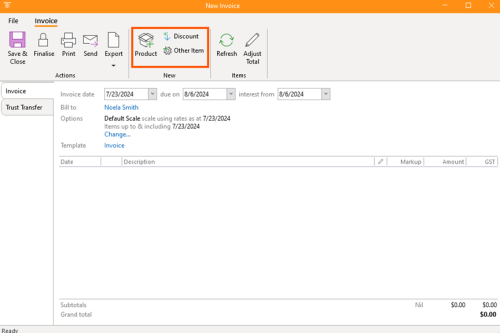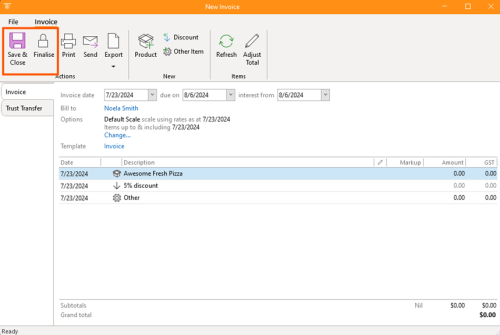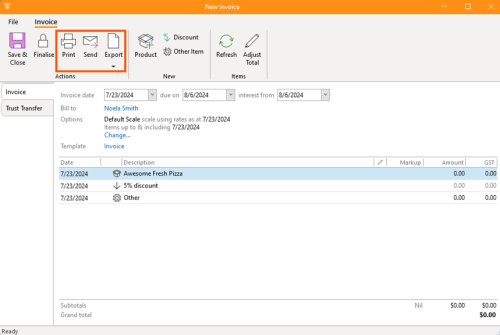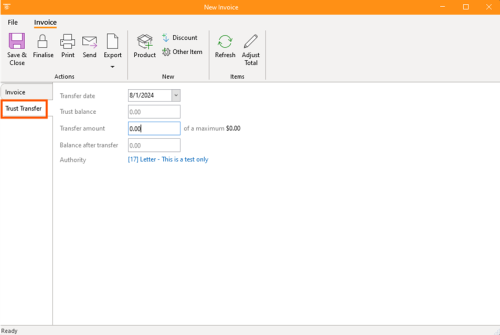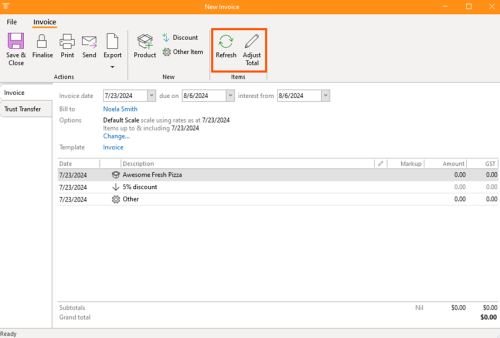How-To:Invoice
ContactsLaw simplifies invoicing by automating essential tasks, such as pre-filling invoice fields based on client data and quotes, applying rate scales, and managing tax calculations like GST. The software also offers customizable templates for professional invoices and allows users to set payment due dates, interest accrual, and cut-off dates for billable items. Advanced features like trust transfers, solution-based billing, and automated document production further enhance the efficiency of financial processes, reducing administrative burdens and improving accuracy within legal practices
1. Getting Started
- Select the Home tab on the ribbon and, under Billings, click Create Invoice
2. Enter Invoice Details
- Invoice Date: Enter the date to appear on the printed invoice.
- Due Date: Set the date when payment is due. By default, it is 14 days after the invoice date. Adjust if necessary.
- Interest Accrual Date: Set the date when interest begins to accrue. This can be the same as the due date or different if you want to allow a grace period.
Set Billing Contact
- The billing contact defaults to the client of the matter. To address the invoice to another person, change the contact information accordingly.
Billing Options
- Quote: If the invoice is based on a quote, select it to pre-fill items. If not, build the invoice directly.
- Rate Scale: Choose the rate scale to apply, reflecting the rates as of the current date or a specified date.
- Cut-Off Date: Set the cut-off date for including items in the invoice. For example, include charges up to the day before the invoice date.
- GST: Decide whether to charge GST (sales tax). If not applicable, set the amounts to 0.
Select an Invoice Template
- Choose an appropriate template to format the invoice. If no template is available, add one later. This template will generate a printable document linked to the invoice.
3. Add Invoice Items
- Products: Include products (groupings of time or fixed charges). Adjust quantities and rates as needed.
- Custom Items: Add any other billable items with a free-form description (e.g., photocopying charges).
- Discounts: Apply discounts as a fixed amount or a percentage of the total invoice.
4. Review and Finalise
- Save the invoice as a draft if further changes are needed.
- Finalise the invoice to post it to the general ledger, making it unchangeable.
- Finalising will generate and link the invoice document to the matter.
5. Print, Send, or Export Invoice
- Print: Utilize the template to print the invoice document.
- Send: Generate a covering email with the invoice attached, addressed to the billing contact.
- Export: Download the invoice document for further editing or records.
6. Trust Transfer
- If applicable, navigate to the trust transfer section.
- Enter the transfer date, trust balance, and transfer amount. Review the balance after transfer.
- Add a document for authorization if required.
Additional Features
- Use the refresh button to update invoice amounts if time records or other details change.
- Use the total button to round the invoice total to a specific amount, adjusting item amounts proportionally.



